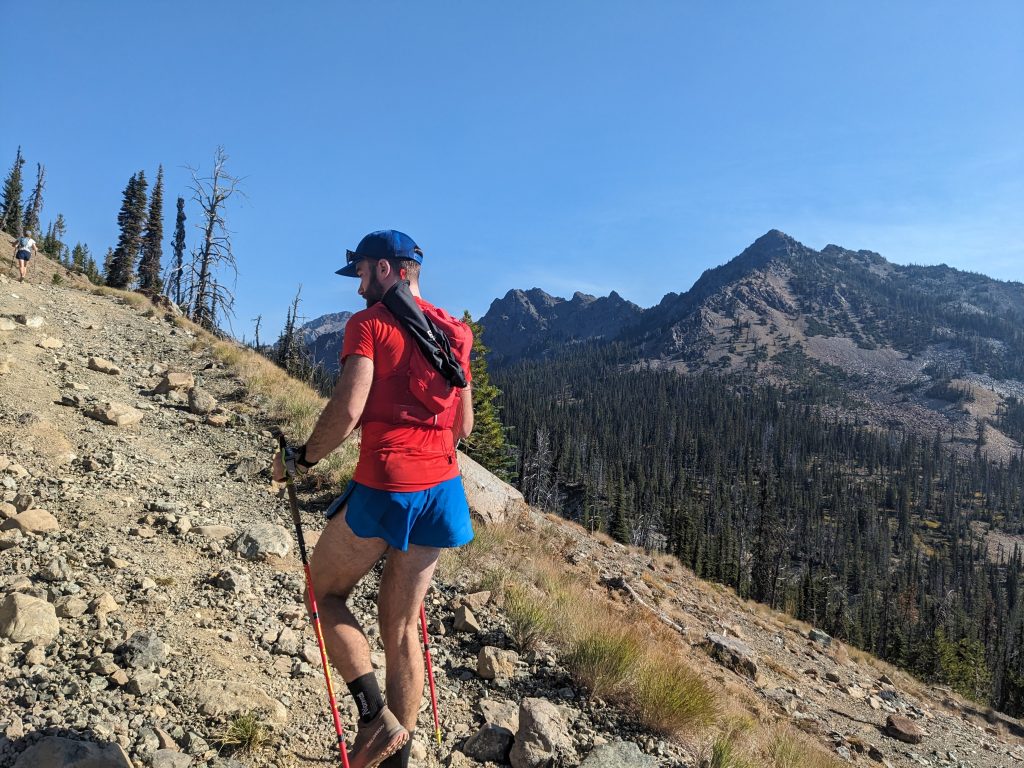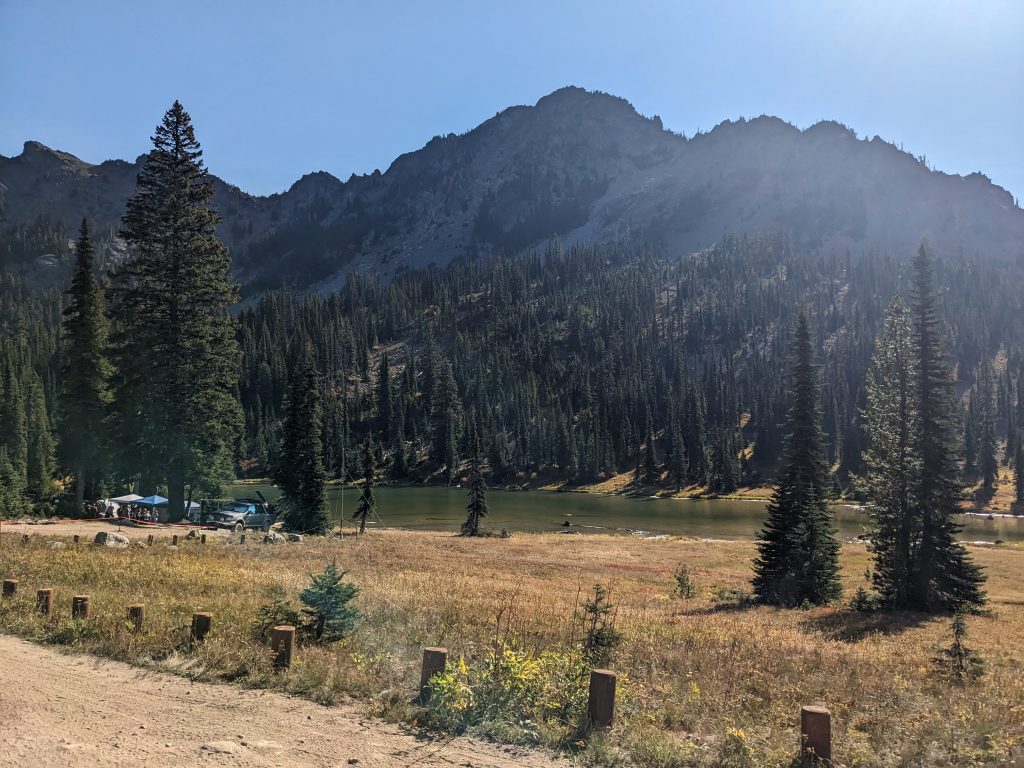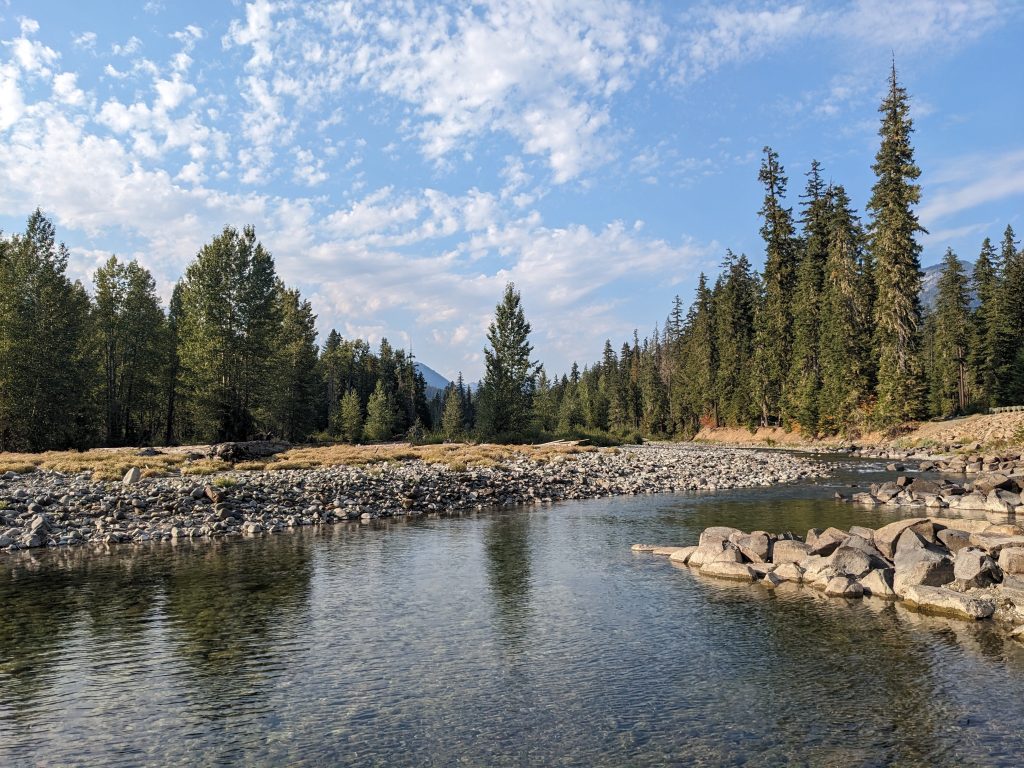Nothing Teeny About It
Even though I frequently cover large distances in the mountains, I rarely do traditional “ultra” races. However, my friends like Blake and Daniel, along with many others, have become more frequent racers, and this connection to the race community has been a really fun development. Last year, I did my first 50k race: Run the Rock 50k at Smith Rock. This year, Logan suggested that we do the Teenyway 50k, a new 50k race in the Teanaway Region of the Cascades. With rugged trails and nearly 11,000 ft of gain, it sounded like a great course for the running-challenged / hiking-inclined, like us.
The Teenyway 50k race is a shorter version of the Teanaway Country 100 mile race. Starting from the Salmon La Sac Sno-Park, the race course climbs up and down through the Gallagher Head / Van Epps regions, forming a lollipop loop. Because of all the wilderness protection in Washington, there are relatively few “alpine” races. This race is possible because of the old mining roads that still allow jeeps to get aid station supplies to these high sections of the course. Shoutout to these aid station volunteers!
Logan, Daniel, and I drove in Saturday morning and began the race around 8 am. Nearly half of the racers chose to do the earlier 7 am start to give more daylight to finish. Daniel and I got passed by about a dozen racers on the first long climb, trying to keep a sustainable fast hiking pace. We were confused to see so many people jogging past us, barely 5% faster, without removing the poles from their packs. We knew that power hiking would be the key to success on such a steep course.
Daniel and I moved well through the first few climbs and pushed the descents, easily making up ground with our abilities to run the technical trails. Some sections are impressively steep and the motorized use on these trails results in loose rocks and dirt.


After the first aid station 11 miles in at Gallagher Head Lake, we started to push the pace on the notorious rocky jeep road descent. We were able to pass quite a few racers here because many struggled to find their footing with the loose rocks. Around mile 13, my left hand brushed a bush and I let out a yelp – an insect sting! This one hurt more intensely than any sting I have ever gotten.
As we transitioned to our next climb, Daniel helped me get some Diphenhydramine from my first aid kit out. My hand was swelling, but I was otherwise feeling okay. We pushed the pace on this climb to the Van Epps Aid Station, possibly a little too much.
At the Van Epps Aid Station, I ran into my friend Andi from Leavenworth, who was doing the 100 mile race! My stomach started to feel a bit nauseous, but I figured that might happen with the midday heat. I asked if they had any cream for my swelling hand, but they did not have any.
Daniel and I maintained a mix of hiking and slow jogging on the gradual climb to Lake Ann. We looked back to find a good pack following us closely near our high point on the course.

The next descent was incredibly rocky and technical – definitely not runnable. Some Cowgill friends were waiting to cheer us on around this point, which was nice to see. I started feeling sharp cramps in my hamstrings on some of my downhill steps – not a good sign considering we still had 15 miles to go. I drank as much water as I could and slammed a bunch of electrolyte pills, but my stomach was feeling pretty bad at this point.

After the descent from Fortune Creek Pass, we climbed back up to the Gallagher Head Aid Station. One man passed us, the only person who would pass us for the entire race after the initial climb. But there were still quite a few others right on our tail as we rolled into the aid station.
With still 11 miles to go, no more aid stations, a few thousand feet of climbing, and temperatures probably in the mid 70s, I knew the remaining section was going to hurt. I drank a half liter of electrolyte water at the aid station and filled up my two 500 ml soft flasks, which I knew would not be enough for the next few hours.
The cramping got significantly worse on the flats and long descent down Boulder Creek. My entire leg would seize up on every other step. I knew that I should not be feeling this bad with so much course remaining. But there is no dropping for the Teenyway 50k; if you quit, you still have to hike back to the start. DNFs are truly not an option. At this point, I really just wanted to end the suffering, so I figured I might as well keep going and get it over with sooner.
On the next climb, the ailments spread from my legs, swollen hand, and unsettled gut, to my head. It felt like I had an intense head cold with mucus filling my sinuses. Each breath pulsed through my head like it wanted to explode. Up until this point, I reasonably could have just blamed dehydration for my problems. But now I was certain that this was also related to the sting I had suffered a few hours earlier. Paired with a high level of physical exertion, it was ravaging systems all over my body.
I was very grateful to have Daniel pulling me through this climb, but I was not sure I could keep up for much longer. Our pace had slowed considerably to a moderate walk uphill. At the top of the climb, Daniel started to move ahead and I was sure that was the last I would see of him. We still had a moderate descent, steep climb, and long descent remaining. I was not sure how I was going to get there.
The next descent was awful. I stumbled down the rocky trail, leaning on my poles for balance. The cramping in my legs was unrelenting. I had completely fallen apart. On the next ascent, I literally could not move my legs up the steep grade without cramping, so I had to resort to French stepping like on steep snow. My poles were the only thing that got me through this final climb. With my snail-like pace, I kept expecting others to pass me, but I guess they were all struggling just as much as me! This realization gave me mental solidarity with the other racers. Incredibly, I actually caught up to Daniel, who was now experiencing his own nausea problems, at the top of the climb.
We still had a long 5 mile descent remaining. Since I had run out of water, I filled up at the next stream crossing. Then something incredible happened. At the junction about 4 miles from the finish, I suddenly felt a change throughout my body. My sinuses started to clear up, my hand stopped throbbing, my gut felt better, and the cramping got better. It was as if my body was finally coming out of the allergic reaction. I felt like a new man, and said goodbye to Daniel as I bounded down the trail.
While the final 4 miles were certainly challenging, they were much better than the previous 10. The last few miles were incredibly hot in the afternoon sun and the loose rocks were tough to navigate, but at least my movement resembled jogging more than stumbling. The cramping once again caught up with me in the final mile. I found that walking did not resolve the stingers shooting up and down my hamstrings and it was more effective to just ignore the cramping and keep running. I was beyond elated to see the finish line, along with a surprise appearance from Barrett and Blake there!

Daniel came in shortly after me and the four of us took a dip in the Salmon La Sac River, which really helped us cool down. Then we had a nice finish line hang with other finishers as we waited for Logan to come in. The race is pretty small, but it has a fun, local vibe. We exchanged stories of wasps nests (it seemed that the majority of participants got stung at least once, although often in different spots on the course – and this also happened last year) and dehydration. Overall, I felt that it was a well organized, unique race for Washington, but unfortunately the near certainty of getting stung probably means I will not do this race again unless they can figure out a solution for the wasps (maybe move the race to early summer?).

I finished in 5th place with a time of 7:54 on this 32 mile, 11,000 ft gain course. Daniel finished about 15 minutes behind me, and Logan came in just shy of 10 hours. While I had hopes of coming closer to 7 hours, the fact that I actually finished with the setbacks experienced is still something to be proud of. Stinging insects have surprisingly caused me a lot of problems this year, unlike years of the past. Anecdotally, it seems that friends are getting stung all over on nearly a weekly basis during this late summer. While normally a sting just results in some local swelling for me, I think that the race level exertion caused systemic problems throughout my body. Miles 20-28 were probably the second hardest thing I have ever done in the mountains, only behind Little T and Big T in a day. If I had been able to drop out, I probably would have (and then I finally would have gotten to write a DNF report!). But the strength to get through this is something I will be able to draw from in the future.
My fitness was mediocre coming into the race. I have spent much more time backpacking (like the Glacier Peak High Route) this summer than during past years. That has likely given me good fitness for slower, heavier activities. But I actually had not covered a 50k distance on a day trip like this since early June! And after a packed July, August was relatively lackluster for me. So I definitely did not feel as strong coming into the race as I did, for example, at the same time last year. Then again, I never do specific training and racing is always an afterthought compared to my personal adventures, so I should not expect great results.
Am I hooked on racing? Definitely not after that rough experience! But I still am feeling motivated to work more on my speed at short distances and support my friends in some of their big races. Next year, I am curious about trying a 50 mile or 100k race, since I think that distance might suit me better.
